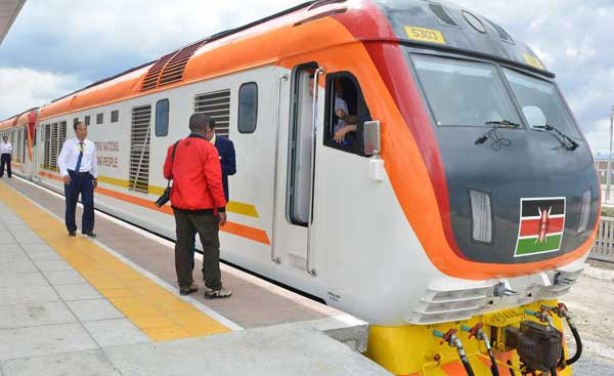Africa’s railway infrastructure, while less dense than Europe or Asia, plays a critical role in connecting landlocked economies to ports, facilitating mining exports, and boosting regional trade. The continent’s longest railway lines are often tied to historical colonial projects or modern mining operations, linking urban hubs to mineral-rich regions and international markets.
The table below ranks Africa’s ten longest railway lines by length and highlights key endpoints, countries served, and economic significance.
| Rank | Railway Line | Countries Served | Length (km) | Key Endpoints | Primary Use / Economic Significance |
|---|---|---|---|---|---|
| 1 | TAZARA Railway | Tanzania, Zambia | 1,860 | Dar es Salaam – Kapiri Mposhi | Connects Zambia’s copper belt to Tanzanian port; vital for mining exports. |
| 2 | Benguela Railway | Angola, DR Congo, Zambia | 1,344 | Lobito – Dilolo | Exports copper and other minerals from DR Congo and Zambia to Atlantic ports. |
| 3 | Algerian National Rail | Algeria | 1,200 | Algiers – Annaba | Passenger and freight; connects major industrial and port cities. |
| 4 | Trans-Saharan Rail | Nigeria, Niger (proposed/partial) | 1,100 | Lagos – Niamey | Planned freight corridor to link landlocked Niger to Nigerian ports. |
| 5 | Cairo–Alexandria Railway | Egypt | 1,086 | Cairo – Alexandria | One of Africa’s oldest railways; heavy passenger and freight traffic. |
| 6 | Eastern Railway Line | Kenya | 1,062 | Mombasa – Malaba | Key for container freight and passenger services; links Kenya to Uganda. |
| 7 | Cape Town–Johannesburg | South Africa | 1,060 | Cape Town – Johannesburg | Vital for passenger travel and freight; links South Africa’s economic hubs. |
| 8 | Dakar–Niger Railway | Senegal, Mali | 1,287 | Dakar – Koulikoro | Facilitates regional trade in West Africa; connects inland Mali to Atlantic port. |
| 9 | Addis Ababa–Djibouti Railway | Ethiopia, Djibouti | 750 | Addis Ababa – Djibouti Port | Modern standard-gauge railway; major route for Ethiopian exports. |
| 10 | Benguela–Lobito Line Extension | Angola | 1,344 | Lobito – Eastern Copper Mines | Integrates Angola’s rail network with mineral export corridors. |
Note: Some lines overlap due to extensions or are part of regional corridors.
Analysis and Insights
- Mining and Resource Corridors Drive Length
The longest lines in Africa often exist to connect resource-rich inland regions to ports. TAZARA, Benguela, and the Dakar–Niger Railway are prime examples, facilitating copper, minerals, and other export commodities. This underscores the continued influence of extractive industries on transport infrastructure development. - Colonial Legacies and Modern Upgrades
Several of the continent’s longest railways—like the Cairo–Alexandria line and Benguela Railway—date back to colonial infrastructure projects. Over time, modernization efforts, including standard-gauge conversions and electrification (e.g., Addis Ababa–Djibouti Railway), have improved efficiency, reduced transit times, and enhanced freight capacity. - Regional Integration Trends
Long railways often span multiple countries, highlighting the importance of cross-border coordination. TAZARA, for instance, remains a vital link between Zambia and Tanzania, reducing dependency on southern routes through Zimbabwe and South Africa. Similarly, the Dakar–Niger Railway strengthens trade connectivity between Senegal and Mali. - Passenger vs Freight Focus
While some lines like Cape Town–Johannesburg and Cairo–Alexandria carry significant passenger traffic, most long railways are freight-centric. This is particularly true for mining corridors, where bulk commodities require efficient, high-capacity transport. - Future Expansion Opportunities
The continent continues to invest in modern railways, with projects like the standard-gauge network in Kenya and Ethiopia–Djibouti corridor demonstrating the economic impact of faster, more reliable rail freight. Expansion of cross-border corridors, electrification, and integration with ports remain priorities for economic growth.
Trends Over Time
1. Length vs Modernization:
A clear trend shows that while Africa’s longest railways were historically built during the colonial era, modernization has focused on medium-length corridors that boost trade efficiency. Newly built lines such as Addis Ababa–Djibouti (750 km) achieve higher economic impact than some older, longer lines with lower operational speeds.
2. Regional Concentration:
Southern Africa dominates in terms of length and cross-border connectivity (TAZARA, Benguela), while West Africa has historically long but lower-capacity lines (Dakar–Niger). North Africa’s dense but shorter lines focus on high-demand urban and industrial corridors.
3. Economic Implications:
- Mining exports depend heavily on rail, with inefficiencies causing bottlenecks in commodity supply chains.
- Passenger-focused lines, while shorter, support urbanization and labor mobility.
- Investments in standard-gauge and electrification increase competitiveness by reducing freight costs and travel times.
Implications for Business and Investment
- Logistics and Supply Chains: Investors in freight, warehousing, and mining should focus on corridors connecting ports to inland production centers.
- Infrastructure Investment: Modernization opportunities in older networks offer returns through improved transit times, lower costs, and expanded regional trade.
- Public Policy: Cross-border railway agreements can facilitate regional integration and reduce logistical bottlenecks, particularly for landlocked countries like Zambia, Niger, and Mali.
- Urban and Industrial Development: Passenger and mixed-use lines, particularly in North and East Africa, support urban expansion and labor mobility.
Africa’s railway lines remain strategic arteries for trade, urban connectivity, and economic growth. While some routes span over 1,800 km and date back decades, new projects focused on speed, efficiency, and cross-border integration are reshaping the continent’s logistics landscape, creating opportunities for investors, industries, and regional economies alike.





